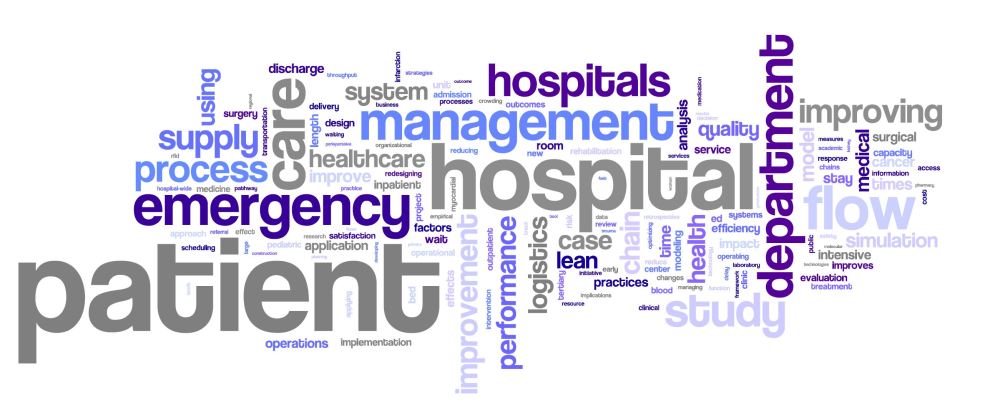After some trial and error excercise in literature research I established a fruitful search strategy. My search strategy consisted of three separate searches in three different databases, PubMed, EBSCOhost and JSTOR. I searched on:
Hospital AND Logistics
Hospital AND Flow AND Process
Hospital AND Supply Chain Management
Hospital AND Operations Management
I limited my search to the past ten years – being 2006-2016 – and to articles written in English. That resulted in almost 1,050 unique articles. I screened them all for mentioning logistical parameters. In 291 articles such parameters were actually found. I found 106 logistical parameters.
I have written a scientific paper on this, which is now under review at a journal and hopefully it will be available soon. I will not repeat that article in this blog. First of all because the journal will not appreciate it, but foremost because this blog mostly is about insights emerging from this research, that are not shared in a scientific way.
First let’s see what the 291 articles, mentioning logistical parameters are about. These articles mention one or more logistical parameters. I made an image of all article title words, here presented. All the irrelevant words such as ‘and’ or ‘the’ were left out. The larger a word is shown, the more it is mentioned in the article title. The obvious ones, hospital and logistics are there. Since 83% of all the articles focus on patients, the word ‘patient’ comes out clearly. This is remarkable because the field of logistics, traditionally, mostly deals with material flows, especially when we talk about ‘supply chain management’. There were 48 articles on supply chain management – 16% of all articles – so from this it also appears that logistics in hospitals is not researched on a large scale from a material flow perspective.

Another observation is that more articles are on a specific department, whereas hospital-wide perspective is rarely shown. Look for the word ‘hospital wide’ in this picture. It’s there, but it is very small. A hint: left side, close to Process. In an earlier blog I mentioned research stating that the coherence and collaboration of the entire hospital is essential for its success, but nonetheless when logistics in hospitals is studied, this is focussed on individual departments, it seems.
Worth mentioning also is the fact that ‘Emergency’ care is a topic seen often. There were 38 articles about emergency care, mostly the emergency department. It is an exciting topic – hospital soap series are usually about the ER too and for a reason – but from a financial perspective the OR or a hospital wide perspective would be much more interesting.
There is much more to say about this picture, but I would like to stress one aspect in particular. Many articles have a focus on improving things and imply a certain ‘makeability’ (I honestly don’t know if this is the correct English word, but what I mean is that we assume things can be made better by people, in popular terms a ‘can do’ or ‘yes we can’ idea). ‘Design’, ‘improving’, ‘improvement’, ‘lean’, ‘effects’, ‘reduce’ are words I associate with that. That is interesting too, because as I was wondering in one of my blogs, when it comes to hospital strategies such as merger or investing in new facilities, logistics – and the associated desire to improve – do not seem to be in the picture. That was my next scoping study: is strategy in hospitals linked to logistical parameters in international literature?